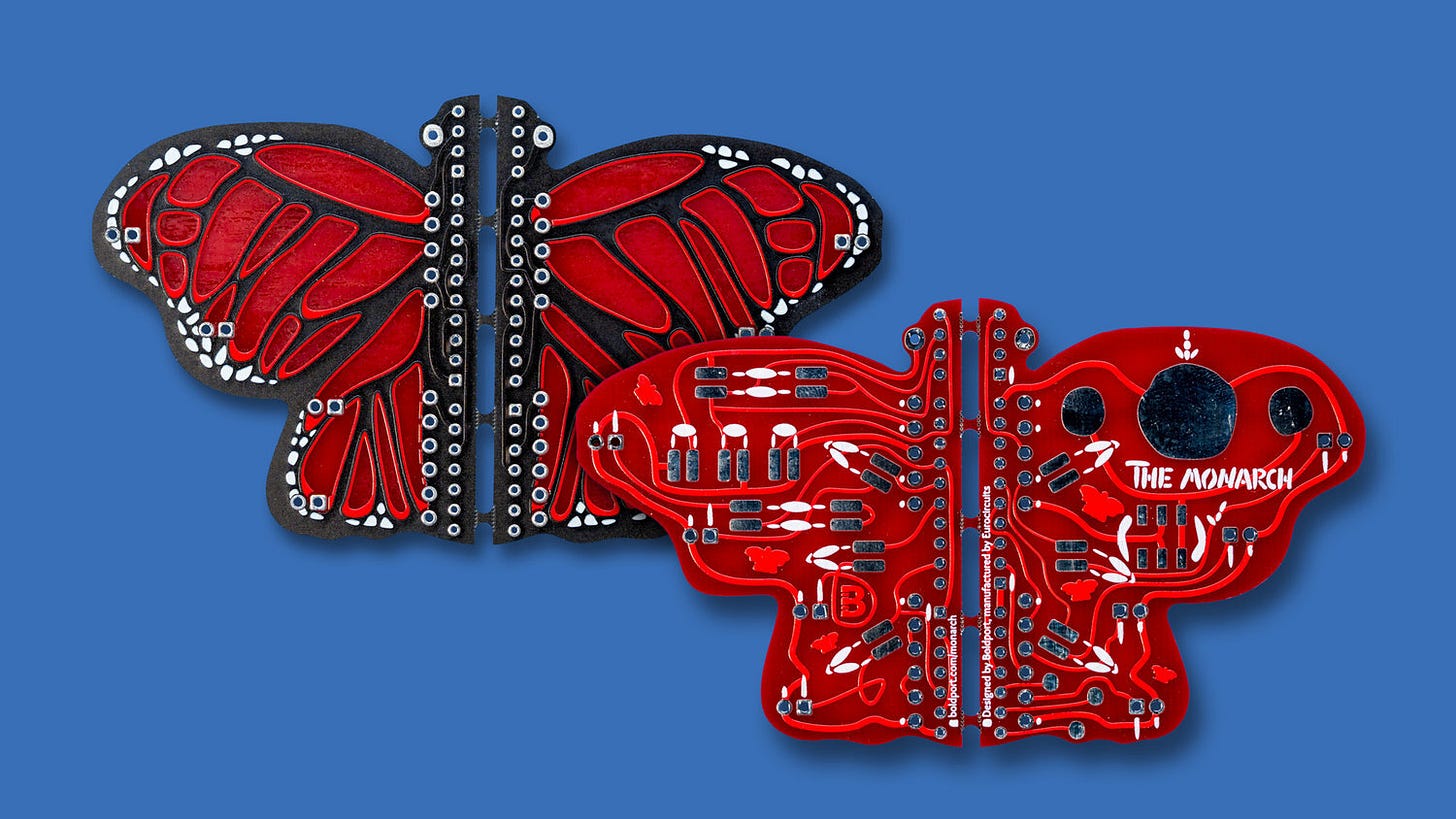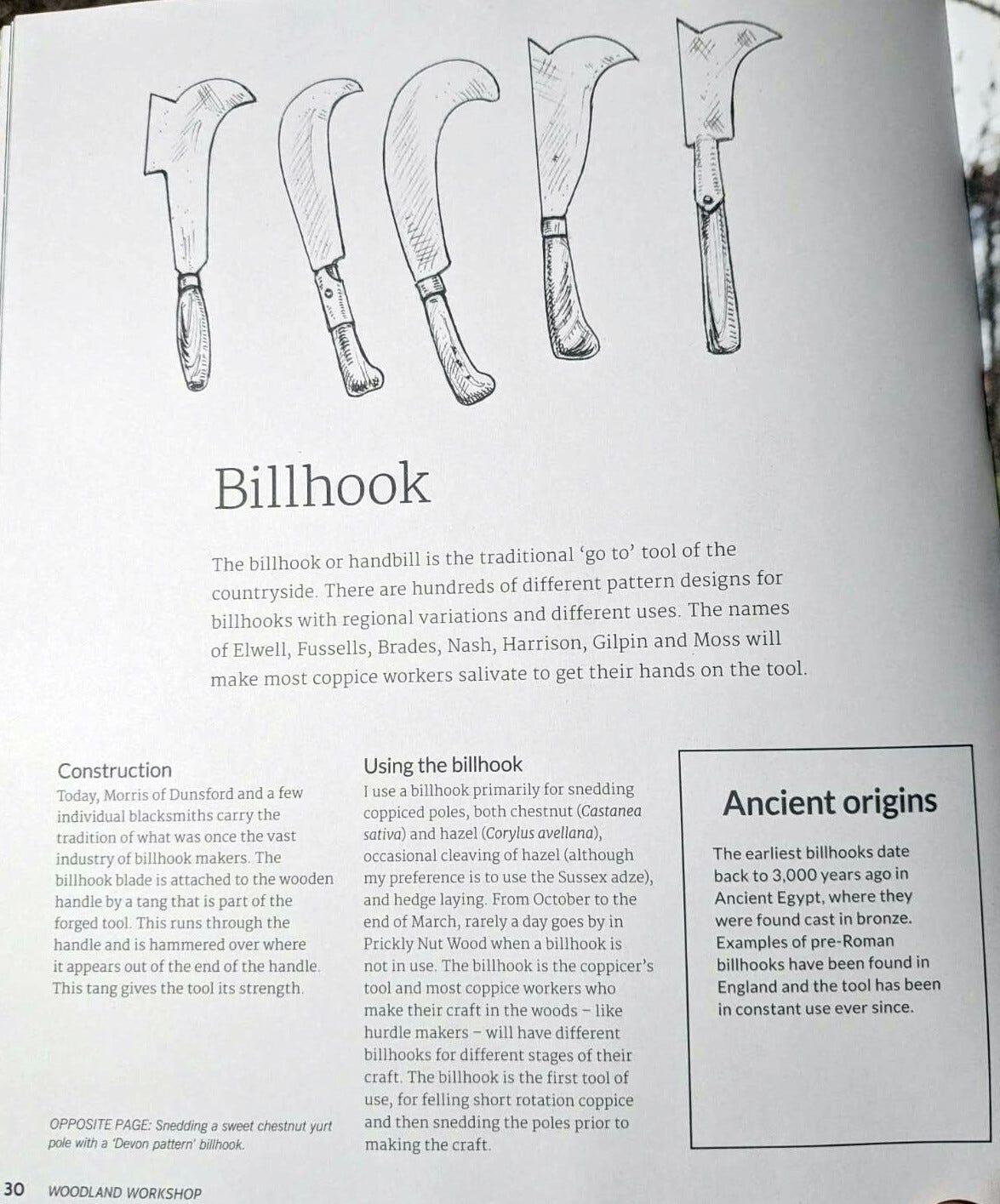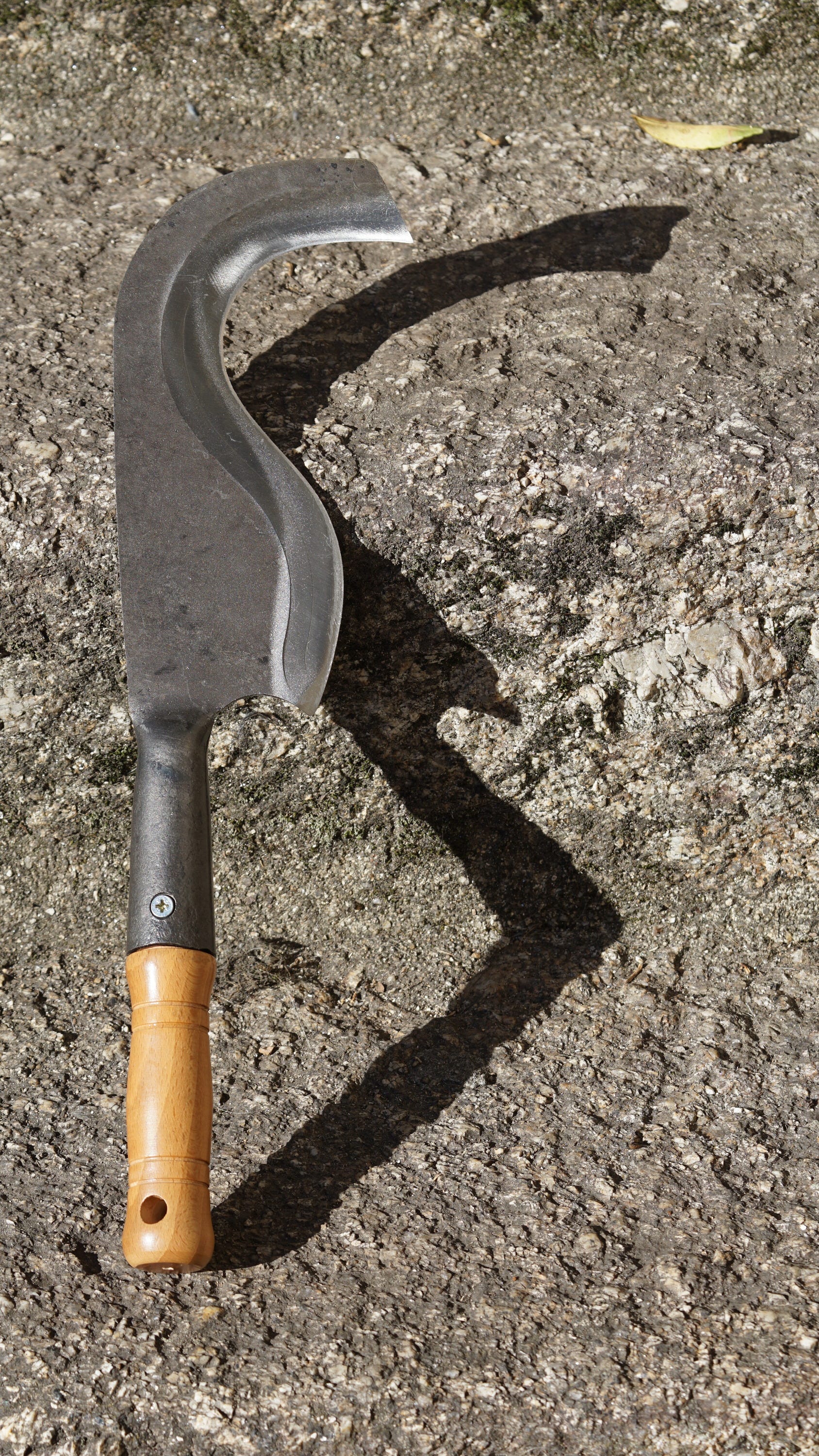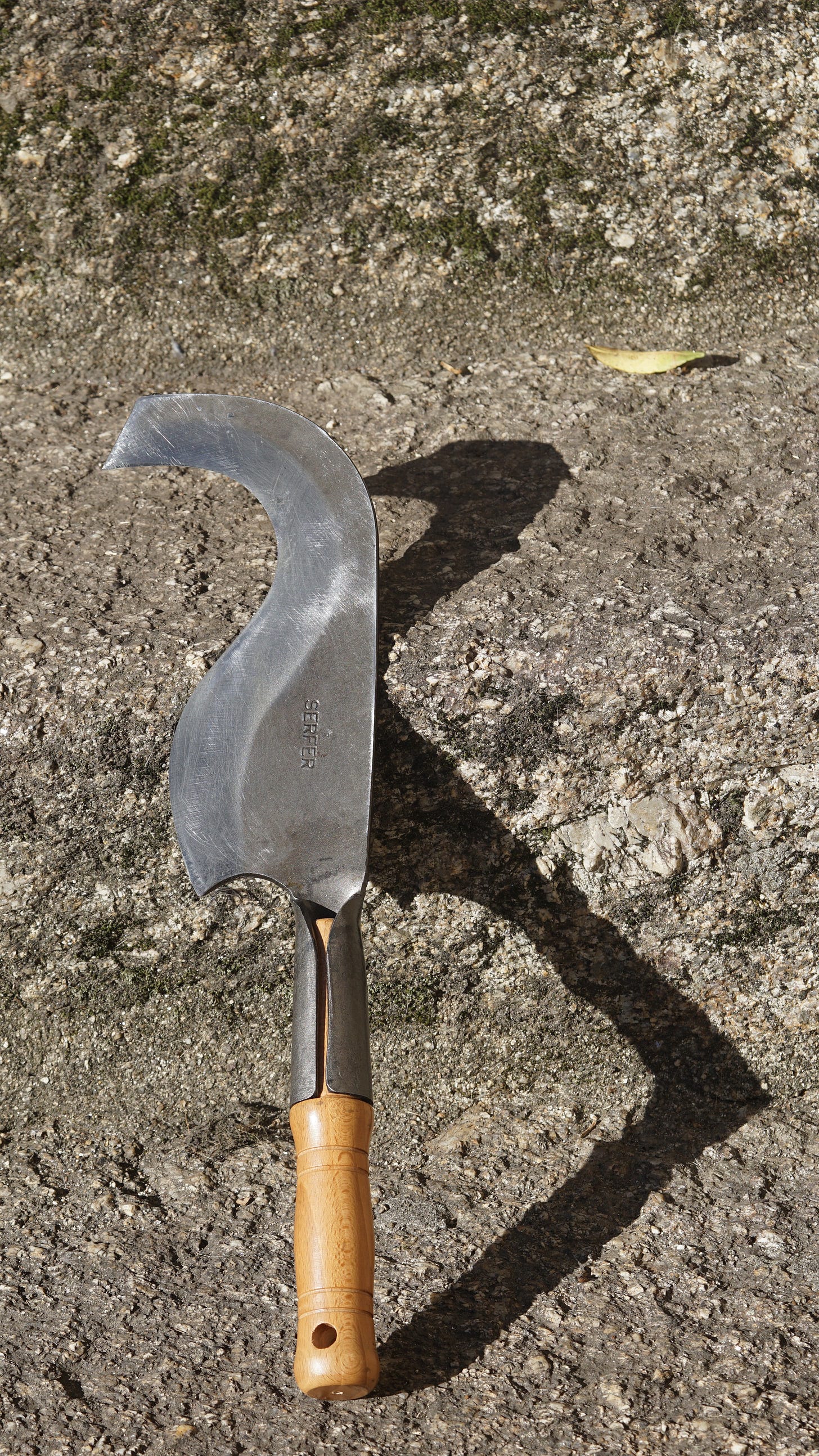The Amarante billhook

I certainly didn’t know what a billhook was. It wasn’t until I noticed this beautifully curved tool hanging from a neighbor’s belt, whilst he was attending to his vines at the onset of winter. I suppose that I was hooked and searched for this tool until I found it in a local hardware store. To my delight it is called ‘foice tipo Amarante’… the Amarante billhook!

(Some of you may know my affinity to curves; I broke 135° tradition and applied them, heavily, into circuit-board design for a few years. So this exceptionally curved billhook, local to where I chose to live, seemed serendipitous1.)

Interestingly, the name billhook isn’t derived from bill or hook as Robert Burgess thoroughly explains:
Hook would thus appear to derive from hack (German) or hak (Dutch) and bill from beil (German) or bijl (Dutch) thus also giving some clues as to the origins of the Anglo Saxon invaders of Britain as well as the origin as of the name.
Thus bill does not refer to the shape of the tool resembling the beak (or bill) of a bird, nor does hook relate to the shape of the blade with a hooked end. Bill, beil or bijl go back to the OED definition giving its origin as axe or short sword. Hook, hack or hak also refer to the action of the tool for cutting or chopping. In German the word for the verb ‘to chop’ is hacken (noun hacke or hacker) and in Dutch it is hakken (noun hakker). The word for hook is haken (German) or haak (Dutch).
Thus billhook (hackbeil also hackebeil or hakbijl) describes the function of the tool as a chopping tool (sword, axe or short knife), rather than its ‘hooked’ shape (further confirmed by the alternative names of hackmesser (German) and hakmes (Dutch) where messer/mes mean knife, hence chopping knife. In both languages (and also in Italian, Hungarian and Polish) the word for a billhook can also be synonymous with a meat cleaver.
While we’re at it, for more on the rich world of billhooks, please visit Robert Burgess’s site, which seems, by far, to be the authoritative resource on these tools. Particularly, here’s his research on Portuguese billhooks.
⁂
Billhooks are fascinating, as similar designs have emerged independently throughout the world with hundreds — thousands? — of variations. Some have hooks on the back for pushing, pulling, and shaking branches (such as for dropping olives) whilst others have a mini axe for chopping on a surface when the extended nose prevents it. Some billhooks are quite long and some are short (even my Amarante foice comes in a smaller version).



⁂
A foice is a billhook, but in Portuguese seems to be applied rather more broadly to other farm-maintenance cutting implements. Another term that’s used is podão, for those that have a tang.

A billhook is a multitool; I’ve used it as an axe and for log hooking/carrying, debarking, weeding, clearing, chopping, and snedding. The foice in the top image is a new one I got after I lost my first one in the forest, which I used for about three years. Over time I stopped bothering taking an axe and other tools with me to the woods since the foice can do so much on its own.
It occurred to me that the name was applied to different types of Portuguese billhooks randomly by a manufacturer, and this one happened to get ‘Amarante’, even if it wasn’t local. (There are many types of similar tools that have place names… Penafiel, Minho, Baião, Barcelos, etc.) I wasn’t able to eliminate this possibility completely, but my research indicates that it isn’t likely to be the case.




Someone should make it pocket size! Like a Swiss Knife but with billhook :)
Amarante has it all! From guitars to billhook, is there anything missing?? Uau!
I love a multi-tool, more specifically using a tool or any object for something it was not intended. I once hung a mirror in the spare room using only a screw, rawl plug and a teaspoon! Still hanging solid today, it's an extremely satisfying misuse of an teaspoon, which I now call a multi-tool.